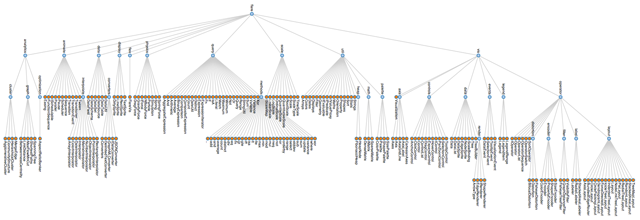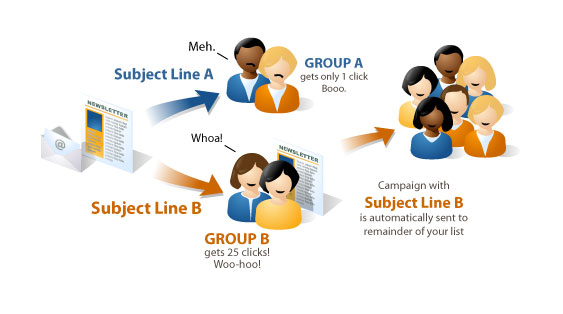60 SEO tips & Online Marketing techniques for ecommerce Websites
 Improving the Online Marketing presence of an Ecommerce website is usually a very challenging task. This is because the Online Marketers & SEO Professionals have to optimize the website in order to achieve better rankings on Search Engines, they must improve the user experience, they have to use all the available channels to promote the Online business and above all they have to find ways to increase conversion rates & boost the sales.
Improving the Online Marketing presence of an Ecommerce website is usually a very challenging task. This is because the Online Marketers & SEO Professionals have to optimize the website in order to achieve better rankings on Search Engines, they must improve the user experience, they have to use all the available channels to promote the Online business and above all they have to find ways to increase conversion rates & boost the sales.
Few weeks ago we published a detailed SEO Checklist with 60 essential checks that need to be done before launching a website. In this article we list 60 important SEO tips and Online Marketing techniques that can be used in order to improve the Online Marketing presence of an ecommerce website. The list touches upon several different parts of the optimization process and thus we group the various tips & techniques in 8 large categories.
Link Structure
1. Use SEO Friendly URLs which contain the important keywords of each product or category.
2. Choose carefully your categories and use a tree-like link structure.
3. Prefer the “example.com/product1” URL structure over the “example.com/cat1/procuct1” structure if you have multiple categorization. The second one can create duplicate content issues.
4. Link directly from your homepage to your best selling products.
5. Watch out for duplicate content and use canonical URLs. Don’t create multiple landing pages for minor product differences (color, size etc).
6. Eliminate all the Dangling & Broken links by using the Link Structure Tool.

On Page Optimization
7. Conduct Keyword Research and find out how people search for your products.
8. Use targeted, compelling and unique Page Titles.
9. Usually you should use singular over plural (example camera vs cameras). Check the trends in your industry to see which is more popular.
10. Don`t use generic manufacturer product descriptions to avoid duplicate content issues. Write meaningful & useful descriptions for at least the best selling products.
11. Optimize your pages for the targeted keywords and check their Keyword Rank with Keyword Analyzer tool.
12. Don`t create thin content and pages that are not needed. Panda is watching you!
13. Produce compelling SERP snippets to increase CTR.
14. Use schema.org to label the product details and prices.
15. Update your content regularly to keep it fresh.
16. Optimize your images (filenames, alts, surrounded text) to increase the traffic that you receive through Image Search.

Link Building
17. Use targeted anchor texts by using the keywords that appear on the title of each product/category.
18. Analyze the link building campaigns of your competitors and try to acquire links from the same high quality sources.
19. Use text hyperlinks to link between your products and categories.
20. Build links that point directly to the product landing pages and don’t focus all your link building efforts only on homepage.
Design & User experience
21. Use properly the call to actions. Keep them clear and place them strategically on your pages.
22. Create a compelling, user friendly, professional design.
23. Use “security badges” (McAfee, VeriSign, Better Business Bureau or Direct Marketing Association) to gain the trust of your visitors.
24. Don`t confuse the visitor with 1 million options. Steer his/her attention to the call to action.
25. Offer all the cool features such as “Add to wishlist”, “Send Email alert when product becomes available”, “subscribe to Newsletter” etc. They are good for the users and they can help you increase conversion rates.
26. Use several images and videos featuring the best selling products.
27. Ensure that your website is cross browser.
28. Keep your check-out and payment process simple to increase your conversion rate and reduce the Shopping cart abandonment rate.
29. Reduce the loading time of your website by minimizing the size of css/js/image files and by using caching mechanisms.

Website Structure & Architecture
30. Choose carefully the Ecommerce platform that you will use. Ensure that it is regularly updated, that it has lots of plugins, that it is supported by an active community or a serious company and that it is SEO Friendly. Don’t select the platform only based on its cost.
31. Create HTML & XML sitemaps and submit them to the various search engines.
32. Avoid using AJAX, Flash and other non SEO Friendly technologies for important parts of your page.
33. Ensure that the session IDs do not appear in URLs. This can create a duplicate content issue.
34. Mind Pagination and the order of the products in those pages. Ensure that the most important/best selling/popular products appear first on the list.
35. Create a product RSS feed.
36. Offer to your users the ability to search for particular products based on their name, brand, price and characteristics.
Social Media & Promotion
37. Add the social media buttons on a strategic place of your page.
38. Use product reviews and ratings.
39. Organize contests to generate positive Buzz for your company.
40. Create a blog within your website and write reviews for the best selling products.
41. Use PPC advertising to get highly targeted traffic.
42. Use Email Marketing campaigns and keep in touch with your loyal customers.
43. Sign up on Google Merchant Center to have your products appearing on Google Product Search.
44. Check if affiliate marketing can help you boost your sales.
45. Don’t use spammy methods to promote your website (spam mail, comment trolling, etc)!

Monitoring
46. Track user behavior and see how he/she navigates through your website.
47. Identify your good clients, request their feedback and reward them by offering discounts.
48. Identify the trends and the best selling products.
49. Focus on conversion rates and make the appropriate changes to improve your sales.
50. Use A/B and Multivariable Testing to improve user experience and sales.

Off page factors and other must-have Features
51. Decide how many languages you should support on your website and which should be the default one. Have a different URL for each language version, don’t use a cookie solution.
52. Choose the name and the TLD of your domain wisely. A .com or a country specific TLD can really make the difference.
53. Host your website on a reliable hosting company. Choose wisely the country of the server.
54. Decide on whether you should use GEO Targeting methods.
55. Offer a lighter & simpler mobile version of your website.
56. Recommend similar products to your visitors.
57. Provide various payment methods to your customers (Credit Card, PayPal, Direct Bank Transfer etc).
58. Offer different shipping methods and reach to as many countries as possible.
59. Use robots.txt to ensure that search engine spiders can’t access the various ecommerce features/functions such as Add to Basket, complete purchase, add to wishlist etc.
60. Create Special Offers & Brand Landing Pages to boost your sales.

Even though optimizing an ecommerce website is a complicated and challenging task, I believe that the above list along with the initial SEO checklist that we published recently, can cover the most important parts of the process and they can be a great starting point for the SEO professionals & Online Marketers. I wish to all of you the best of luck and I’ll be happy to hear your thoughts and suggestions.
What other tips do you have for optimizing an Ecommerce website? Leave your comments below and don’t forget to share this article if you like it. 🙂

 74 Comments
74 Comments


